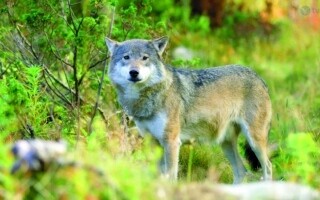
Researchers assert that the return of wolves to the Scottish Highlands may help promote the expansion of primary forests capable of sequestering a million tons of carbon dioxide annually, and bring the United Kingdom closer to net-zero carbon emissions levels. Scientists argue this helps as the reintroduction of the native wolves, which have been extinct in Scotland for centuries, could reduce the number of red deer that are damaging saplings and harming old trees by stripping their bark.
According to their calculations, published in the journal "Ecological Solutions and Evidence", 170 introduced wolves would be sufficient to reduce deer numbers to a level that allows young trees to take root and forests to spread. Scientists estimated that new trees would sequester around a million tons of carbon dioxide from the atmosphere each year, which constitutes approximately 5% of the required level of forest carbon reductions needed for achieving net-zero by 2050.
According to this study, the United Kingdom emits around 400 million tons of carbon dioxide each year. Researchers point out that the return of wolves faces strong opposition from farmers and hunters of deer. However, they assert that this predator would effectively reduce a far more dense population, and considerations of the benefits of returning wolves to this country should be taken into account.
Professor of environmental science at the University of Leeds, Dominic Spracklin, who led the research, stated that "it becomes increasingly clear that the climate crisis and biodiversity crisis cannot be solved separately from each other." He added: "We need to contemplate the potential role of natural processes, such as the reintroduction of species, to restore our declining ecosystems, which, in turn, can bring co-benefits for climate and nature."
Scotland has one of the lowest levels of primary forest in Europe, with forests covering only about 4% of the territory. Natural reforestation is significantly limited by territories protected from deer by fencing, and many areas managed with high deer populations rarely see seedlings flourish with a reduced number of red deer.
Spracklin and his colleagues suggest that the other benefits include reduced road accidents involving deer, reduced levels of Lyme disease spread by attached ticks, and decreased costs for deer management in some areas, where more saplings appear with lower deer populations.













